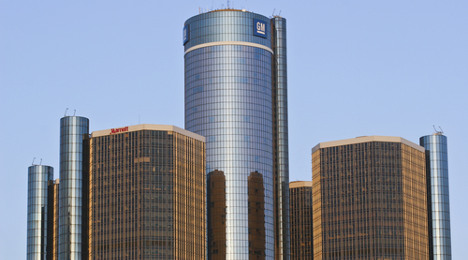Q&A with Dan Kennedy of GM Remarketing

Auto Remarketing has launched a new series this year called “Consignor Connection,” in which we catch up with a leading remarketing executive at a different consignor each month.
In a Q&A format, we talk about best practices, auction industry trends and more. The latest in this series features Dan Kennedy, manager of GM Remarketing:
Auto Remarketing: On an industry-wide level, how has the increase in volume, particularly off-lease units, impacted the auction industry in 2015?
Dan Kennedy: The increased inventory levels create opportunities on several levels. For dealers it means an easing of some of the inventory concerns that had arisen in recent years. It also allows OEMs and consignors to offer even better values for their dealers.
Finally, there’s a tremendous opportunity for the CPO industry to continue its strong growth path, due to better access to the “certifiable” inventory they demand. We’ve seen this for our industry-leading programs at GM, and we fully expect that the trend will only be enhanced by the access to increased inventory.
AR: How does General Motors strike a balance when it comes to choosing how your cars are sold, be it auction sales, online sales, open/closed sales, etc.?
DK: The team is constantly reviewing the various channels, online upstream or the physical sale lanes to determine which channel is the most efficient at the current time. It is a constant effort to find the right level of volume for each of the channels that meets our dealer’s needs and minimizes expenses and transit time.
AR: What are some of the biggest challenges (and opportunities) in the auction market for consignors like GM in 2015? Are there any CFPB- or regulatory-related challenges that would extend to the remarketing world?
DK: Since we are only selling the returning rental and company vehicles, the CFPB is not an issue for our sales. One of the challenges will be making sure we meet our dealers’ needs and expectations when it comes to volumes, vehicle quality, convenience and level of services they are seeking.
As the volumes increase at the physical auctions, can the auctions physically handle the increased volumes? Many auction sites reduced their space and staffing when the volumes declined. Can the auctions sites perform all the services required of them, storing, repairing, reconditioning and offering the vehicles in the time frame that we as sellers are requiring?
They also need the marketing staff to contact the dealers to make them aware of the products that are being offered. We, the auctions and the sellers must be creative in attracting the dealers into the sale lanes, either online or in the lane.
Another challenge is finding the right balance between the various sale channels available to our dealers: upstream online, physical auctions — closed and open — and posting of vehicles at the various auctions’ websites. Still another opportunity is the issue we face trying to transport vehicles from return locations to auction sites for sale. The various carriers are allocating more of their resources to moving the increasing volume of new vehicles making it more difficult to find timely, cost-efficient transportation of the used vehicles.
AR: What are some ways that OEMs, consignors, dealers and auctions can work together to keep residuals strong?
DK: As sellers we share many buyers. One way we have been successful is teaming up with some of the other OEMs and offering both of our closed sales on the same day, making it easier for our dealers to satisfy their business needs while tying them up for a single day, versus a couple of days.
Looking at co-loading of rail cars to help move vehicles faster in another area we have utilized. These days, we as sellers must be creative to think out of the box to find solutions that not only positively impact resale values, but improve efficiencies and reduce the cost of selling for all parties involved.

 View The Latest Edition
View The Latest Edition

